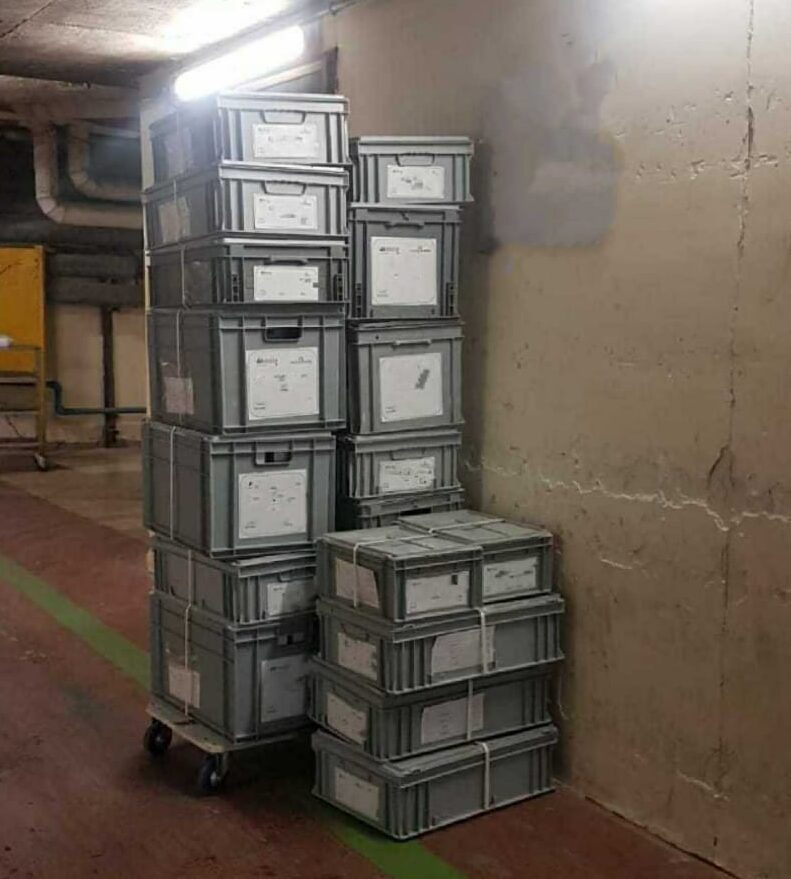What’s inside:
It’s vital for hospitals to keep track of trunk stock inventory and that means getting bill-only items into the system.
This blog looks at:
- The risk of non-documented trunk stock
- Ensuring utilization of trunk stock is recorded in hospital systems
- The issue of expiry control of bill-only items
- The additional nurse supply chain admin burden of vendor items
- Using technology to track trunk stock
For hospital supply chains, knowing the inventory status of each sales representative’s trunk stock inventory is an elusive and often impossible objective to achieve.
Not knowing what assets are in the field, in terms of preloading items into the system and expiry date control, has significant effects on your operational workflow, effective billing capture and, more seriously, may pose a safety threat to patients.
1. Lack of tools to control trunk stock inventory
We know the challenges, managing inventory in hospitals is not an easy task: lack of industrial standardization for manufacturers’ SKUs of medical equipment, a mix of areas managed either by supply teams or medical staff, some equipment comes packaged in kits and some comes directly in the front door from a rep, some is consignment inventory, some not. The trunk stock inventory problem originates from improper processes, lack of mechanisms to track, and difficulty in verifying the integrity of inventory at the rep level.
2. Usage Capture at the front door
For a majority of hospitals, trying to obtain trunk stock visibility is simply fighting a losing battle. Let’s try to break down why is it so difficult. Utilization capture is most efficient when done at the item level. The problem begins when there is a new item that first appears in the front door inventory. Tracking trunk stock inventory via barcode scanning, when there wasn’t pre-onboarding into the hospital system will cause a “hole” in the billing reconciliation process or will entail a host of manual administrative tasks that place the burden on the clinical staff.
3. Impaired expiry control
Hospitals follow a restricted set of protocols to ensure that no harm is done to patients. Supply chain and surgical staff have their own ways to ensure the safe use of products. But what if the source of a loophole comes from uncontrolled items, such as trunk stock inventory, which is under the vendor’s accountability? Reps need an easy option (preference is given to available tools such as smartphones) to track and verify that inventory is free of expired or recalled items. This is where real-time visibility and joint responsibility between the vendor and the hospital begins.

4. Administration and workflow challenges
The excessive workloads of healthcare staff have been increasing over the years and peaked during the Covid-19 period. This is one of the most critical components of burnout and has led to substantial staff attrition. This can include long working hours, mismanaged work/life balance, and lack of flexibility, but also includes administrative aspects that require significant attention from healthcare staff – such as usage documentation, automatic charting, manual tracking of expiration dates and recalled products, fixing mismatch data errors, and managing multiple workflows and tools. Whenever there is a problem with inventory management, even in the case of trunk stock, eventually the clinical team is the last line of defense that has to deal with the problems in the field. Have we already said that appropriate tools are missing?
Snapping is the solution
IDENTI Medical utilizes innovative image recognition while object capture technology guarantees accurate utilization capture and patient safety by automatically reading the product’s SKU, batch/lot/serial numbers, and expiration date by simply snapping a picture of the product. Clinical staff are freed from scanning bar codes, searching for product information, or manually inputting expiration dates into patient files.
With the Snap & Go image capture device there is no need to pre-upload the item into the item master file, new and unfamiliar items are automatically identified and synced into the hospital catalog lists.

A dedicated IDENTI team completes missing product information when there is difficulty in recognition to ensure the hospitals item master is always up to date. No team intervention is needed. IDENTI’s communication engine can translate product details and consumption information to any downstream system for advanced analytics or other documentation purposes. IDENTI Medical’s total portfolio of patient safety technology and inventory management systems are in daily use by major healthcare centers and vendors, delivering 100% charge capture, zero waste and identification of expired items.
With Snap & Go hospitals can obtain full control over ‘front door’ trunk stock inventory, apply accurate billing, share accountability with their vendors, and protect their patients from expired and recalled products.
Contact us for a personal demonstration.






